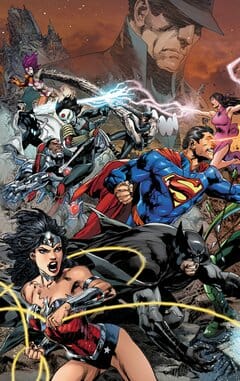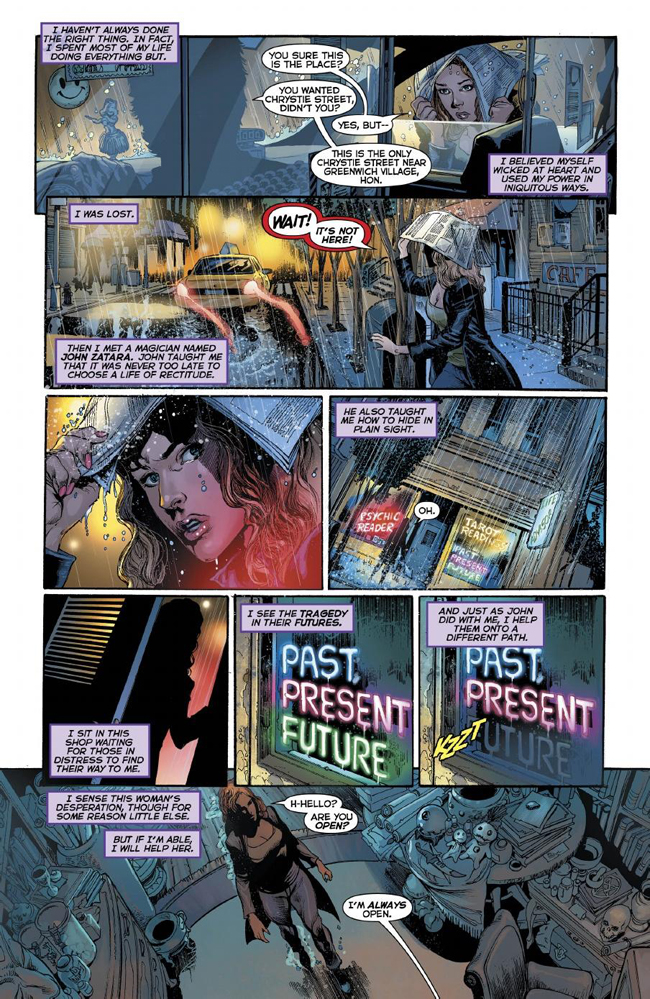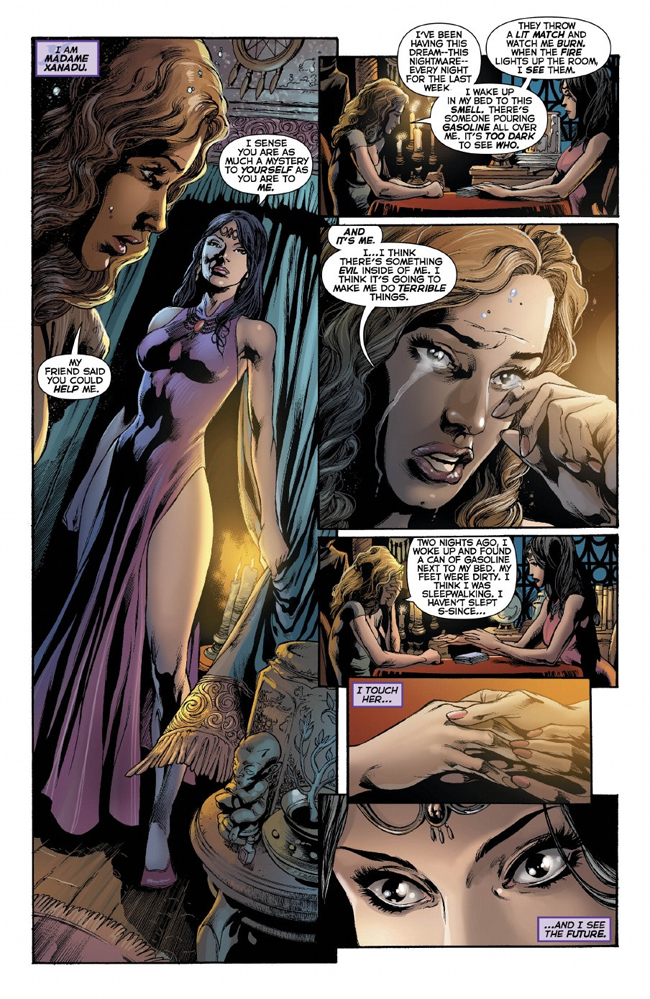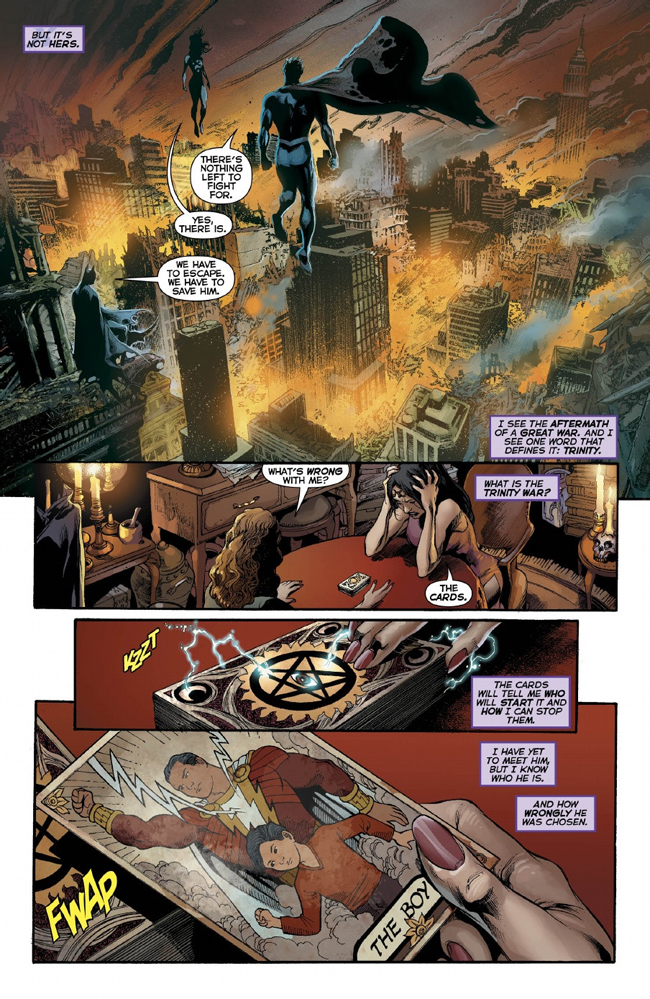Justice League #22 by Geoff Johns & Ivan Reis

Writer: Geoff Johns
Artist: Ivan Reis
Publisher: DC
Release Date: July 10, 2013
Justice League #22 could be a thesis for what makes the DC Universe such a remarkable playground of fiction. Whereas Marvel dives inside its characters to reveal a psych 101 text book of alcoholics, sociopaths, and introverts, DC works best when it goes mythic, combining a pluralism of humanity’s communal lore. Greek gods, photosynthetic aliens, and Christian ghosts all exist in the same shared universe. And it’s wonderful. Geoff Johns and artist Ivan Reis ignite DC’s blockbuster event, Trinity War, by reveling in a world that hosts a thriving library of overlapping genres and influences.
The core of this issue revolves around Pandora, the violet stranger who inexplicably popped up in every issue of DC’s revamped titles two years ago. As writer Ray Fawkes showed in last week’s Trinity of Sin: Pandora, the antiheroine is a wandering exile punished with immortality for accidentally releasing the seven sins — illustrated as grotesque boogeymen — into existence millions of years ago. As part of her redemption, she approaches Superman with a magic tupperware box to bottle the vices plaguing humanity. Instead (SPOILER ALERT), Superman loses his Kryptonian cool and incinerates an aspiring hero whose powers inadvertently knock Wonder Woman back to her Invisible Jet.
Let’s not bury the lead: this issue presents the third Super Fatality in six months after the events of Injustice: Gods Among Us and the head-twisting Man of Steel climax. As Pandora states in this very comic, “there’s no evil in Superman!” and Big Blue’s recent slip into homicide feels as natural as giving Tintin a taser or tossing Scooby-Doo into a dogfight. But this story obviously isn’t as nihilistic as it appears; Johns is the same romantic who redeemed Hal Jordan after he decimated a city. He loves these characters too much to debase them, and as he’s stated, Trinity War is a metaphysical murder mystery where puppeteer demons can inhabit the good guys so they can spend the next six issues absolving themselves. Any evil here will eventually manifest a face to punch into an alternate dimension.
-

-

-

-

-

-

-

-

-

-

-

-

-

-

-

-

-

-

-

-

-

-

-

-

-

-

-

-

-

-

-

-

-

-

-

-

-

-

-

-












































